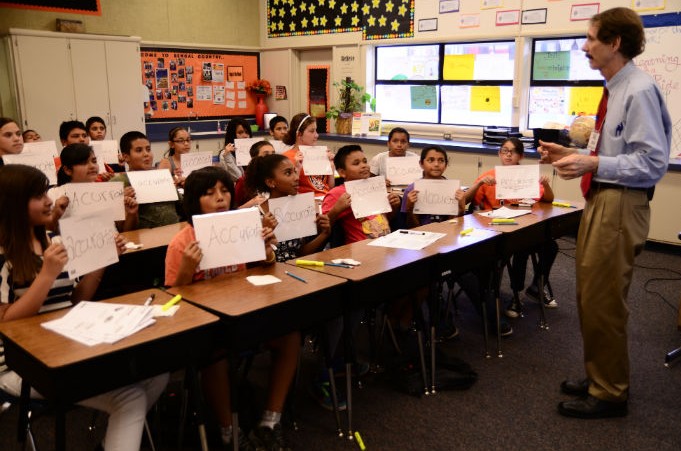Rosenshine principle check for understanding

As a prospective teacher passionate about the science of learning and classroom practices, you might have stumbled upon several educational doctrines. One that is truly noteworthy is the Rosenshine principle check for understanding.
This principle is central to Barak Rosenshine's ten principles of instruction, an evidence-based teaching method designed to improve student outcomes significantly.
Checking for understanding is not just an add-on to teaching but rather the core of the educational process. The goal of this principle is to confirm that students are not just mere passive recipients of information. It ensures that the newly acquired skills are well understood and can be applied in a meaningful way.
Rosenshine principles check for understanding - asking questions
The significance of the 'Check for Understanding' principle is evident, as it essentially determines whether education delivers mere content or secured knowledge. This provides an answer to the all-important question every teacher wants to know - 'Has my student truly understood the concept I was explaining?'
Rosenshine's principle of checking for understanding is often tied to the practice of asking questions - questions that probe understanding rather than asking just for recall. More than just confirming if a student memorized certain facts or details, these questions aim to gauge if the student truly comprehends the learned material.
This principle arms you with a teacher-led approach that enables you to identify where your learners are experiencing difficulties. It is about catching those areas of struggle timely and directly addressing them.
And how do we actively implement this principle in our classrooms? The key to comprehension check is introducing checks for understanding as a regular part of your instruction. This way, students gain a firm grasp of new information and moving ne content and concepts into long-term memory.

Informal testing of newly taught material is something, again, that can be integrated into classroom practice. In truth, consistent testing can actually be quite fun, and can involve short quizzes, in-class activities, interactive games, and lively discussions. These methods all work towards fostering a deep understanding and factual recall of the subject matter.
It's important to note that checks for understanding shouldn't just be solely teachers checking student progress. In addition, empowering students with self-assessment practices allows them to take charge of their learning and encourages self-directed understanding and independent learning.
Moving ahead with the Rosenshine principle check for understanding, it's not just about the final answer but also the thought process leading to it. Reflecting on how they arrived at their conclusion encourages students to flex their problem-solving skills and helps to deepen their understanding of new concepts.
Rosenshine principle check for understanding -
Effective questioning techniques are fundamental in this process. Asking students questions like 'why do you think that?' or 'Is there another possible explanation?' requires students to think critically and actively engage with learned material.
Pairing students for peer assessment can also bring positive outcomes. Many students find comfort discussing their thoughts with their peers, establishing an environment that encourages shared learning.
The principle of checking for understanding is one that breathes life into a classroom. It creates a space where mistakes are not feared but instead viewed as stepping-stones to new learning and growth.

Imagine a classroom where students feel secure in their learning journey, fully aware that their understanding matters - this is what the Rosenshine principles strive for.
But remember, checking for understanding has no one-size-fits-all approach. The most effective strategy is to meet your students where they are and utilize a cocktail of methods to ensure they comprehend the material thoroughly. This is especially true of students ho may have learning difficulties.
Adopting the Rosenshine principle of checking for understanding fosters an inviting, enthusiastic, and exciting classroom environment. It builds a strong foundation for learning that transcends rote memorization to true understanding and application.
Rosenshine's principles serve as your guide to creating vibrant and successful classrooms by teaching students how to secure and deepen their knowledge. With continual checks for understanding, no student is left behind.
Summarizing newly learned content is another crucial aspect. Having students summarize before they leave the class helps them integrate new knowledge with old and makes connections between different subjects easier.
This process not only solidifies their understanding but also provides you, the educator, with a clear snapshot of their comprehension. This can guide you on what needs to be retaught or explained differently.
Rosenshine principle check for understanding - reflective questioning
Reflective questioning adds another layer of depth to this process. Encouraging students to contemplate on how they arrived at an answer or came up with a solution enhances their critical thinking skills and solidifies their understanding.
Remember, checking understanding doesn't always have to be teacher led. Encouraging students to check each other's understanding can provide a different perspective and allow for peer-to-peer learning.

With the Rosenshine principle of checkinf for understanding, each lesson becomes vibrant and exciting. It creates an environment where students are actively involved and teachers can accurately monitor their progress throughout the learning journey.
To wrap up, make your students effective understanding of new concepts the goal of your teaching, not just delivery of content. By performing regular checks for understanding, you ensure that your students aren't just receiving information – they're truly learning and understanding it deeply.
Now, your classroom is bound to be a platform where everyone thrives and succeeds. Remember, real education happens when learning is truly understood.
REFERENCES:
Sherrington, T. (2019) Rosenshine Principles in Action, Jeff Catt Publishing LTD
Updated
09-2023
